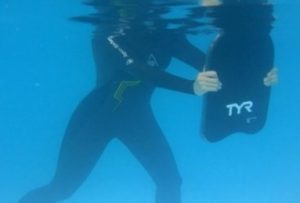Adapting exercises is crucial for individuals with disabilities as it allows them to engage in physical activity and enjoy the benefits of exercise. The advantages of training include improving physical and mental health, boosting self-esteem, and fostering social connections, all of which are essential for overall well-being. Nevertheless, persons with disabilities may face obstacles when participating in physical activity due to physical, sensory, or cognitive limitations.
This is why consulting with an accredited exercise physiologist (AEP) is essential to prescribe the appropriate adaptations to remove these limitations and make physical activity more accessible and inclusive for everyone. In addition, an AEP can provide customized exercise plans that cater to each individual’s specific needs and abilities, ensuring they can engage in physical activity safely and effectively.
This article will cover several types of disabilities, including physical disabilities, visual impairments, hearing impairments, and cognitive disabilities.
| Physical Limitations
Physical disabilities are any condition that affects physical mobility, such as paralysis, amputation, cerebral palsy, or other physical ailments. Chronic pain or fatigue that limits the ability to engage in physical activity for extended periods. Limited range of motion or flexibility due to conditions such as arthritis
|
 |
 |
Sensory Limitations
Sensory limitations refer to any impairments or challenges a person may have concerning their ability to perceive and interpret information from their environment through their senses. For example, limited vision or blindness makes it challenging to navigate spaces and equipment. |
Limited hearing or deafness, making it difficult to follow verbal instructions or cues. Hypersensitivity to certain stimuli, such as bright lights or loud noises (weights dropping), can make it uncomfortable or overwhelming to engage in physical activity.
| Cognitive Limitations
Cognitive limitations are any condition that affects a person’s ability to think, learn, or remember, such as intellectual disabilities or traumatic brain injuries. Difficulty understanding complex instructions or movements due to intellectual disabilities or learning disabilities. |
 |
Difficulty with memory, making it challenging to remember exercises or exercise routines or sequences. Difficulty with spatial awareness or coordination, making it difficult to perform specific movements or activities.
Here are some more specific examples of how strategies for adapting exercises will make them more accessible:
People with limited mobility may have difficulty standing or moving limbs, making many traditional exercises difficult or impossible. Seated exercises, such as seated aerobics, chair yoga, and stretching, can be a good option for people with limited mobility. In addition, resistance bands can perform exercises requiring standing or walking.
 |
 |
 |
Exercises can be performed in a warm pool, which can help to loosen up tight muscles and joints. Aqua therapy, where movements are performed in a pool, can be a low-impact way to build strength and endurance.
 |
 |
 |
Chronic pain or fatigue that limits the ability to engage in physical activity for extended periods. People with chronic pain or fatigue may find it challenging to engage in sustained physical activity or may be limited in the actions they can perform.
Strategies for adaptation: Shorter, more frequent bouts of exercise can be a good option for people with chronic pain or fatigue. Low-impact exercises, such as yoga or Pilates, can be an excellent way to build strength and flexibility without putting undue stress on the body. Mind-body practices, such as meditation or guided relaxation, can help to manage pain and reduce stress.
Strategies for Adaptation:
Exercises that focus on specific muscle groups can be a good option. Stretching exercises can be adapted to accommodate a limited range of motion by using props, such as straps or blocks, to support the body.
Seated Exercise Program:
Warm-up: 5 minutes of seated marching, seated arm circles, and seated shoulder shrugs
Cardio: 5 minutes of seated aerobics, such as seated jumping jacks or seated marching with overhead arm reaches
Strength: 5 minutes of resistance band exercises, such as seated rows or seated bicep curls
Flexibility: 5 minutes of seated stretches, such as seated hamstring stretches or seated spinal twists
Cool-down: 5 minutes of deep breathing and relaxation exercises
Resistance Band Exercise Program:
Warm-up: 5 minutes of gentle stretching, such as shoulder rolls and ankle circles
Cardio: 5 minutes of low-impact cardio, such as marching in place or side-to-side steps
Strength: 5 minutes of resistance band exercises, such as bicep curls, triceps extensions, and lateral raises
Flexibility: 5 minutes of stretching with the resistance band, such as hamstring stretches or chest stretches
Cool-down: 5 minutes of deep breathing and relaxation exercises
Aqua Therapy Exercise Program:
Warm-up: 5 minutes of walking or marching in place in the shallow end of the pool
Cardio: 10 minutes of water aerobics, such as jogging in place or jumping jacks
Strength: 10 minutes of resistance exercises using foam dumbbells or other aquatic equipment, such as underwater bicep curls or leg lifts
Flexibility: 5 minutes of stretching in the water, such as water-assisted hamstring or hip stretches. Cool-down: 5 minutes of treading water or floating on the back, followed by deep breathing and relaxation exercises.
Chris Grant AES AEP ESSA info@thewayaep.com.au
Chris Grant is a Clinical Accredited Exercise Physiologist registered with Exercise Sport Science Australia. He is the manager of; The WAY to better health Mobile Accredited Exercise Physiologist.
